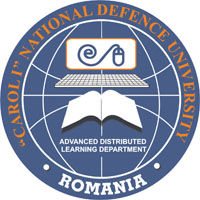USING MOBILE PHONE TECHNOLOGY TO ENHANCE PHYSICAL EDUCATION EFFICIENCY
USING MOBILE PHONE TECHNOLOGY TO ENHANCE PHYSICAL EDUCATION EFFICIENCY
Author(s): Marius Stoicescu, Monica StănescuSubject(s): Education
Published by: Carol I National Defence University Publishing House
Keywords: mobile technology; physical education; lesson efficiency
Summary/Abstract: The last couple of years emphasize a clear decreasing tendency of the motor potential level of children from Romania. By correlating this aspect with the increasingly number of overweight children, we consider that some new methodologies have to be applied, in formal and non-formal activities, to be able to enhance the children's interest in practicing physical exercises. The aim of this paper is to present some possible ways to apply mobile phone technology within physical education lessons and also within other extraschool sport activities. Mobile applications available on Android and iPhone platforms help users to better understand personal results concerning fitness level and give information about the benefits of physical exercises on the human body. Giving more value to the children's pleasure and easiness to use mobile phones, within physical education lesson, the teacher may encourage the pupils to monitor the run rhythm, to measure the distances and the run velocity, to record the calories, to monitor the heart beat, and to calculate the body mass index. From another perspective, during the extraschool activities, the mobile phone technology could be used to configure the track by using GPS, in order to prevent injuries, to indicate altitude, to count the number of steps, and the quantity of water needed by the body. To realize its objective, the paper presents some models of good practice in applying this technology, by emphasizing a series of results (methodology of implementation, children and teachers attitudes) obtained within physical education lessons organized with secondary school children, in Bucharest, in Odobleja School. We are aware that this technology could represent a distinctive content of professional training of teaching staff and could improve the efficiency of its activity.
Journal: Conference proceedings of »eLearning and Software for Education« (eLSE)
- Issue Year: 11/2015
- Issue No: 03
- Page Range: 380-385
- Page Count: 6

